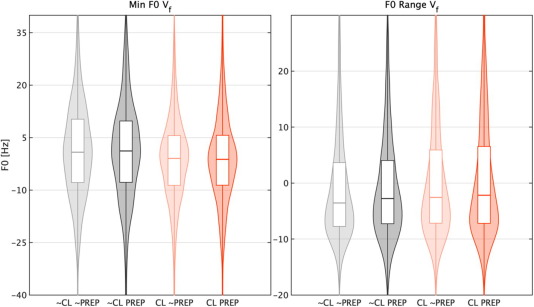News
Sireemas Maspong gives talk on Khmer onset voicing at The Fifth Edinburgh Symposium on Historical Phonology
On December 6, 2021 PhD candidate Sireemas Maspong gave a talk titled "Khmer onset voicing at the end of the 13th century: Zhenla Fengtu Ji revisited" at the The Fifth Edinburgh Symposium on Historical Phonology
Her poster discussed whether Khmer stops at the end of 13th century had already undergone (i) implosivization, and (ii) devoicing and merger of voiced and voiceless stops.
8th March 2022
Nielson Hul to present at SEALS 2022
PhD candidate Nielson Hul will present a paper titled "An Acoustic Analysis of Bilabial implosives in Khmer" at the 31st Southeast Asian Linguistics Society (SEALS) Conference in May, 2022.
The abstract for this talk:
Implosives are a marked class of sounds occurring in an estimated 60 languages distributed across equatorial regions in Southeast Asia, Africa, and the Americas (Ladefoged & Maddieson, 1996). The two most common implosives are voiced bilabial /ɓ/ and alveolar /ɗ/ with the former appearing more frequently. Literature investigating these implosives is unbalanced focusing on languages in South Asia, Africa, and the Americas, which calls for an acoustic investigation of implosives in Southeast Asian languages such as Khmer.
This study examines the acoustic parameters of bilabial implosives in Khmer to determine systematic differences in their realization due to syllable structure and word position. Unlike other implosives, Khmer implosives derived historically from unvoiced stops rather than voiced ones.
Standard Khmer data were recorded from 7 participants in Phnom Penh, Cambodia. Each participant repeated 11 target words within a carrier phrase 6 times each. Target words with bilabial stops including implosive [ɓ] in monosyllabic onset and sesquisyllabic/disyllabic medial, both open [ɓ] and nasally closed [m.b] minor syllables.
Data were extracted using Praat scripting and MATLAB. Acoustic parameters examined included closure duration, amplitude, F0 Vector, HNR, jitter, and shimmer. One key methodological finding is that the amplitude cline from plosive to implosive serves as a primary acoustic cue of implosivity as a continuous variable.
Systematic differences were found for both degree of implosivity and duration. Implosives were both more implosive and longer in word initial position and shorter and less implosive in medial position. This shows that implosivity is a continuous variable, but at the same time one that is sensitive to syllable structure and word position.
Further, an analysis of F0 vector revealed an unvoiced period of 20-50ms in the occlusion period of longer implosive segments, consistent with the historic source of implosives in Khmer.
15th February 2022

Francesco Burroni & Sam Tilsen publish in the Journal of Phonetics
PhD Candidate Francesco Burroni & Dr. Sam Tilsen published an article in the March 22, 2022 edition of the Journal of Phonetics - the article title is The online effect of clash is durational lengthening, not prominence shift: Evidence from Italian, with the following abstract:
A fundamental question about speech is whether it is governed by rhythmic constraints.
One phenomenon that may support the existence of such constraints is the rhythm rule, a phonological pattern hypothesized to resolve prominence clashes and enforce alternations of prominent and non-prominent syllables via shift/deletion of stress and/or pitch accents.
We evaluated evidence for the rhythm rule by studying the acoustic correlates of clash in two experiments with speakers of Italian.
We found that the first prominent syllable in a clash displays a durational increase and more extreme formant values, when compared to no clash. Thus, a clash is manifested as a localized decrease in speech rate, not as a change to the prominence profile of a word.
Since durational increases have been reported for other languages, we argue that they are an online acoustic correlate of clash. We compare two dynamical models of the durational effects, rooted in the framework of Articulatory Phonology: a π-gesture model and a feedback modulation model.
Based on our findings, we argue that the rhythm rule is best conceptualized as the result of contextual biases on lexical selection of prominence patterns.
25th January 2022
Katherine Blake to present at LSA 2022
Grad student Katherine Blake will present a paper titled "Avoiding phonological markedness via word ordering in French and Italian" at the upcoming Linguistics Society of America (LSA) Conference, to be held virtually in January 2022.
Abstract:
This work investigates the phonological conditioning factors on variable word order of {noun, adjective} phrases in two Romance languages: French and Italian.
In both of these languages, the default order of modified noun phrases is [noun adjective], with the modifier coming postnominally (Laenzlinger, 2005; Cinque, 2010). Prenominal order, [adjective noun] is also available for some adjectives.
Critically, there are cases reported in the literature where certain adjectives are permissible in both positions, some without a difference in meaning. Examples of all three types are below (French: Knittel, 2005; Italian: Cinque, 2010).
Results of a corpus study conducted for the present work show evidence for the effects of phonological conditioning on this word ordering.
2nd November 2021
